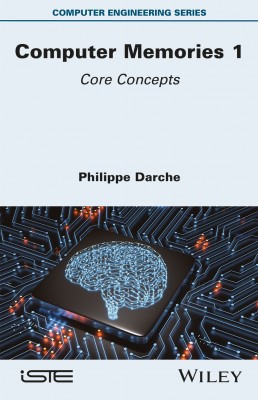
Storage, the computer’s second function, has become progressively more complex to meet growing needs in terms of capacity, speed, security and energy efficiency. It takes the form of a component or system, such as a memory subset or a mass storage device.
With examples drawn from both current and older technologies, Computer Memories 1 begins by presenting the basics of the memory function, including the main characteristics of a generic memory, a technological and historical overview, and a definition of the concept of memory hierarchy. This book then details the internal functional organization of a random-access solid-state memory and the external aspects of a memory system. Complementary notions such as framing, information ordering and error detection/correction, as well as an introduction to error detection and correction codes, conclude the book.
1. The Memory Function.
2. Internal Organization of a Random-Access Semiconductor Memory.
3. Additional Functional Blocks.
4. Advanced Internal Organization.
5. External Aspects of a Memory System.
6. Additional Concepts.
Philippe Darche is Lecturer in Computer Science at the University Institute of Technology (IUT) of Paris – Rives de Seine and Researcher in the Distributed Algorithms and Systems (DeLyS) team at LIP6, Sorbonne University, France. He is also the author of fifteen books on computer architecture.